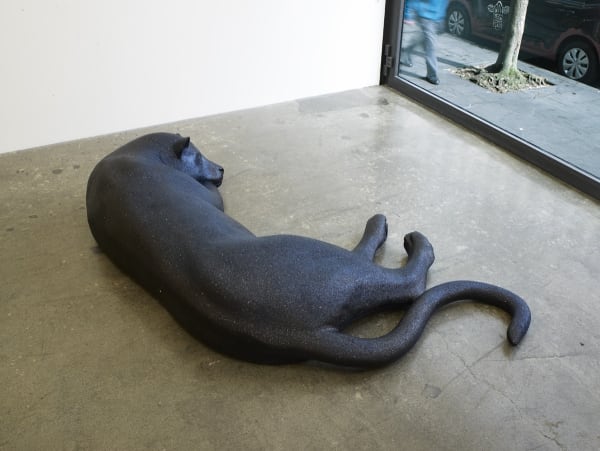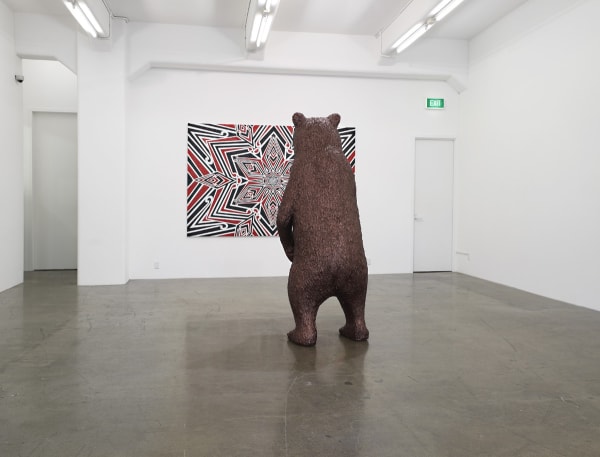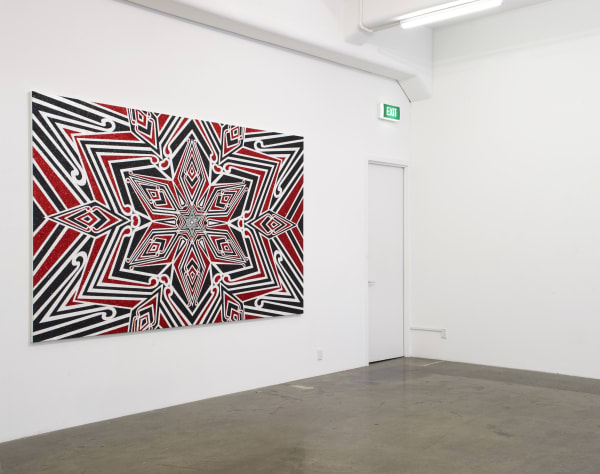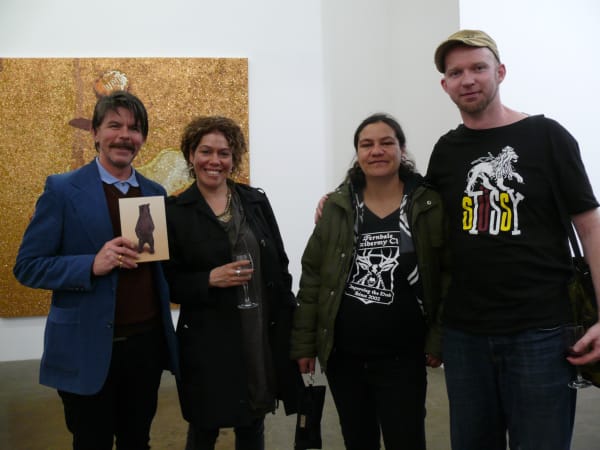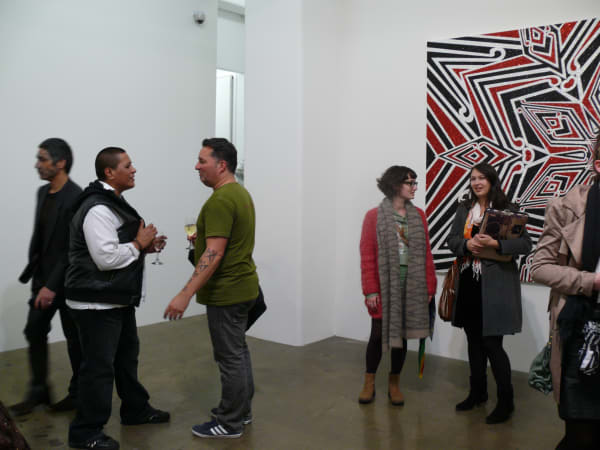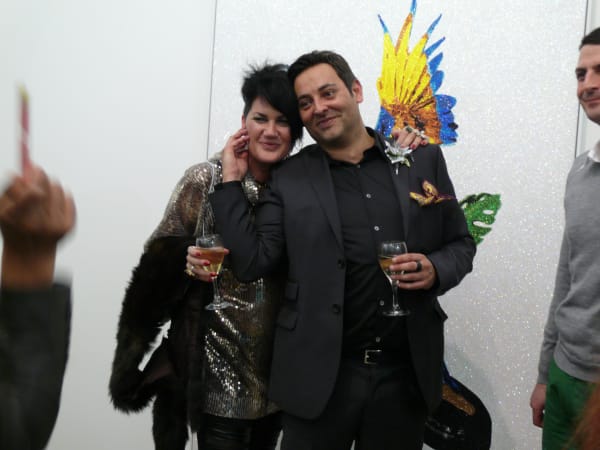Twice Upon A Time: Reuben Paterson
Twice Upon a Time marks a significant leap for Reuben Paterson, from the familiarity of his glitter paintings into the 3-dimensional space of sculpture. The issue of depth is an ongoing concern of Paterson's work, which uses light to animate and open up painting's flat pictorial plane, and to challenge the assumptions we make of a fixed image. Increasingly, Paterson has questioned the parameters of the painterly surface; fixing foil in flight, incorporating photographic depth and creating large, installation-scale works that implicate the viewer more than ever before.
Like the Californian 'light and space' artists of the 1960s and 70s, including De Wain Valentine or James Turrell, Paterson seems inevitably drawn into dialogue with materials and the way that light activates energy and space. Paterson's previous sculptural works include glittered and sequined shoes or gourds, and installations that spread across the landscape.
Precedents for Paterson's use of animals also date back to his earliest works as a student at Elam School of Fine Arts, translating kitsch images of drinking deer into colourful op-art abstracts. More recently, he presented the passive-aggressive pairings of bedspread-inspired predators in Dear Beauty, Dear Beast (Gow Langsford Gallery, 2010), and photographically derived images of marine life in The Water Between Us (2010).
In this exhibition, creatures occupy real space but are deployed in states of suspended motion. A panther (titled Mona Lisa) lies bored on the ground, barely aware of the nearby painting of a deer (The Pentecost), depicted dead on a road - victim to the inglorious sacrifice of a hit-and-run, underscored by the discourteous gesture of a cheery 'get well soon' balloon tethered to its leg that literally adds insult to injury. Transformed through painting, the deer is embalmed in a halo of luminous gravel and elevated on the wall, similar to Paterson's shrine-like painting of a sculpted figurine parrot (The Winged Victory of Samothrace), captured in flight like the winged goddess Nike. There is a hint of decadent luxury in these works, not just in the portrayal of exotic animals, but in their ambivalent stance, appearing cheapened, spent and indifferent. Like much of Paterson's work, there is a sense of former glories; an empire in decline, caught between high culture and instant gratification.
David, a life-size bear, stands like a classical sculpture, but with marble or cast metal substituted for a jewelled coat of bronze glitter - this play on exotic fur and feathers continues Paterson's fascination with patterned textiles. It revisits the subject of a 2011 painting, titled Kevin after the artist's former Canadian partner, echoing Paterson's earlier references to close friends and family through fabric prints. There is also an echo of Dear Beauty's painted tiger, Estrous, which was juxtaposed amidst the kowhaiwhai-and-fabric panels of Whakapapa for the Bottled Lightning exhibition (Gus Fisher Gallery, 2012). Seemingly absorbed in the abyss of a kaleidoscopic landscape, there is a palpable energy between the sculptural David and the painting A Crucifixion, emphasised by the latent threat of the distracted bear.
It is no coincidence that the facetted field David contemplates could be read as a six-pointed Star of David, one of many imported symbols that have been absorbed and adapted by Māori culture. A prominent example is the hybrid iconography associated with the prophets Te Kooti and Rua Kenana, previously referenced in Paterson's work. The bear itself, like the other animals in Twice Upon a Time, is exotic to New Zealand, primarily known locally through stories and films, although it carries reference to North America and suggests a dialogue of cultures and community. As always, Paterson asks us to look again, beyond the surface, to rethink cultural spaces and assumptions, and to consider the non-linear plurality of history - twice upon a time.
Paterson completed a Bachelor of Fine Arts at Elam School of Fine Arts in 1997, followed by a Post Graduate Diploma of Teaching at The University of Auckland's Faculty of Education. He has had exhibitions at Pataka Gallery (2011), Dunedin Public Art Gallery (2007 & 2006), Institute of Modern Art, Brisbane (2005), and in New Zealand Fashion Week in collaboration with WORLD (2003). His work has been included in the Biennale of Sydney (2010), Asia Pacific Triennial, Brisbane (2009), Prague Biennial (2005), and in exhibitions at PLUG-IN Institute of Contemporary Art, Winnipeg (2011), Neuer Berliner Kunstverein, Berlin (2007), and the Rarotongan Cultural Centre (2003), as well as public institutions throughout New Zealand and Australia. He was recipient of the New York International Studio Curatorial Programme Development Prize in the Wallace Art Awards (2005), a finalist in the Castteleon City Arts Council Arts Prize, Spain (2005) and the Moet et Chandon Arts Fellowship in Avize, France (1997).
Text by Andrew Clifford, August 2012




